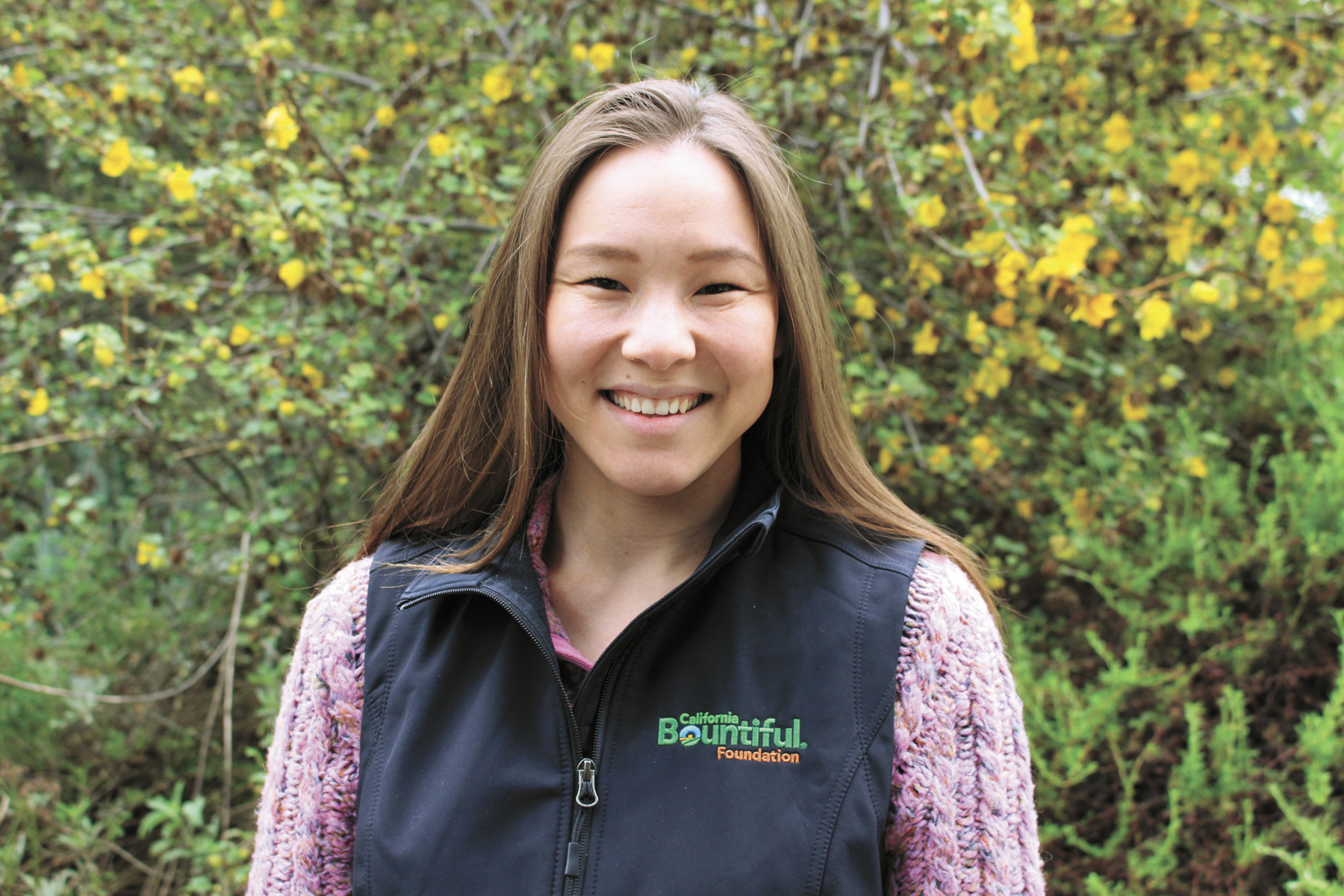Commentary: Investing in healthy soils strengthens farm resilience

Margaret Honig
Healthy Soils Program Project administrative lead for the California Bountiful Foundation
Photo/Christine Souza

By Margaret Honig
Soil health isn’t just a buzzword. It’s the foundation of productive farms, resilient crops and long-term sustainability. As someone who works closely with farmers, I see the challenges firsthand: unpredictable weather, water restrictions, rising input costs and shifting regulations, all of which make soil management feel like one more hurdle in an already demanding industry.
Yet, healthy soil is an investment. It directly impacts yield stability, disease resistance, water efficiency and overall farm resilience. In California’s citrus industry, where growers are battling huanglongbing, extreme heat and increasing regulatory pressures, soil health can be a critical tool for long-term success.
Research consistently shows that improving soil health leads to better fruit quality and yield stability, stronger root systems that support longevity, greater resilience to drought and erosion, and reduced reliance on synthetic fertilizers and pesticides.
The challenge? Many soil health practices require upfront investment and long-term commitment, and in an industry where margins are already tight, not every grower can afford to take that risk.
That’s where the Healthy Soils Program comes in. Funded by the California Department of Food and Agriculture, this program helps farmers implement
research-backed soil health practices such as compost application, cover cropping, reduced tillage, nutrient management, hedgerow planting and more.
At the California Bountiful Foundation, the nonprofit research affiliate of the California Farm Bureau, we administer the Healthy Soils Block Grant Program in partnership with the California Citrus Quality Council and the Xerces Society. Together, we help citrus growers access funding, implement best practices and receive technical assistance tailored to their operation.
The benefits of healthy soil aren’t just theoretical. They’ve been proven through years of research, on-farm demonstration trials and farmer feedback. Here’s how some of the program’s most impactful practices contribute to better soil health management:
• Compost application: Compost adds organic matter, improves microbial diversity and enhances water retention. Research from the University of California, Berkeley, found that compost-amended soil stores more carbon and improves water-holding capacity, which is critical for drought resilience and long-term fertility.
• Cover cropping: Cover crops such as legumes and grasses reduce erosion, fix nitrogen and suppress weeds. A UC Davis study found that cover crops can replace synthetic nitrogen fertilizer needs, helping farmers reduce input costs while maintaining soil health.
• Reduced tillage: Excessive tilling disrupts soil structure and accelerates carbon loss. Studies show that reducing tillage enhances water infiltration, preserves soil microbes and helps retain carbon in soil while improving farm resilience in drought-prone regions.
• Hedgerow plantings: These native plantings increase pollinator activity, improve biodiversity and help reduce
pesticide use. A UC Cooperative Extension study highlights how hedgerows can support beneficial insects that help control common citrus pests. By planting species such as California lilac, buckwheat, toyon and sage, growers can attract natural enemies such as parasitic wasps, lady beetles and lacewings, all of which can reduce the need for chemical pest control.
Even with proven benefits, many farmers hesitate to adopt new soil-health practices due to:
• Economic hurdles: Upfront costs for equipment, labor and materials can be prohibitive, even with cost-share support from the Healthy Soils Program. Continued funding and financial incentives are critical for widespread adoption.
• Short-term vs. long-term returns: Some practices such as composting and cover cropping take years to show measurable results, making them difficult to justify when farmers need immediate returns to stay profitable.
• Market pressures: Consumers and food companies increasingly demand sustainability, but there’s no consistent financial incentive for farmers implementing these practices, meaning the cost burden often falls on the producer.
• Extreme weather, water scarcity and soil erosion: In some California regions, topsoil loss due to heavy rainfall, wind erosion or drought can undermine efforts to rebuild soil structure. Without incentives for cover cropping and reduced tillage, soil degradation will continue to impact productivity.
The Healthy Soils Program helps bridge the transition by offsetting costs and providing technical support. The California Bountiful Foundation and its partners have awarded 39 projects to citrus growers in Fresno, Imperial, Kern, Placer, Riverside, Tulare, San Diego and Ventura counties.
Each participating citrus farm receives up to $200,000 to improve soil health, water retention and carbon sequestration. Among the widely adopted practices are compost application, cover cropping and wood-chip mulching. The California Bountiful Foundation also provides technical assistance, regional hedgerow guidance and material sourcing support. At the foundation, we’re committed to helping farmers integrate soil-health strategies while keeping their operations profitable and productive.
The Healthy Soils Program helps improve soil fertility, water retention and long-term productivity. While challenges such as upfront costs and technical adjustments remain, the 39 awarded projects in citrus groves lay the groundwork for stronger, healthier soils. As these practices take hold, they will drive lasting benefits for citrus growers, agriculture and the future of California food production. At the California Bountiful Foundation, we are committed to supporting this progress and ensuring that healthy soil continues to strengthen California farms for years to come.
To learn more about soil-health practices that can benefit your farm, visit www.nrcs.usda.gov/resources/guides-and-instructions/conservation-practice-standards.
(Margaret Honig is the Healthy Soils Program Project administrative lead for the California Bountiful Foundation, an affiliate 501(c)(3) of the California Farm Bureau. She may be contacted at mhonig@cfbf.com.)




